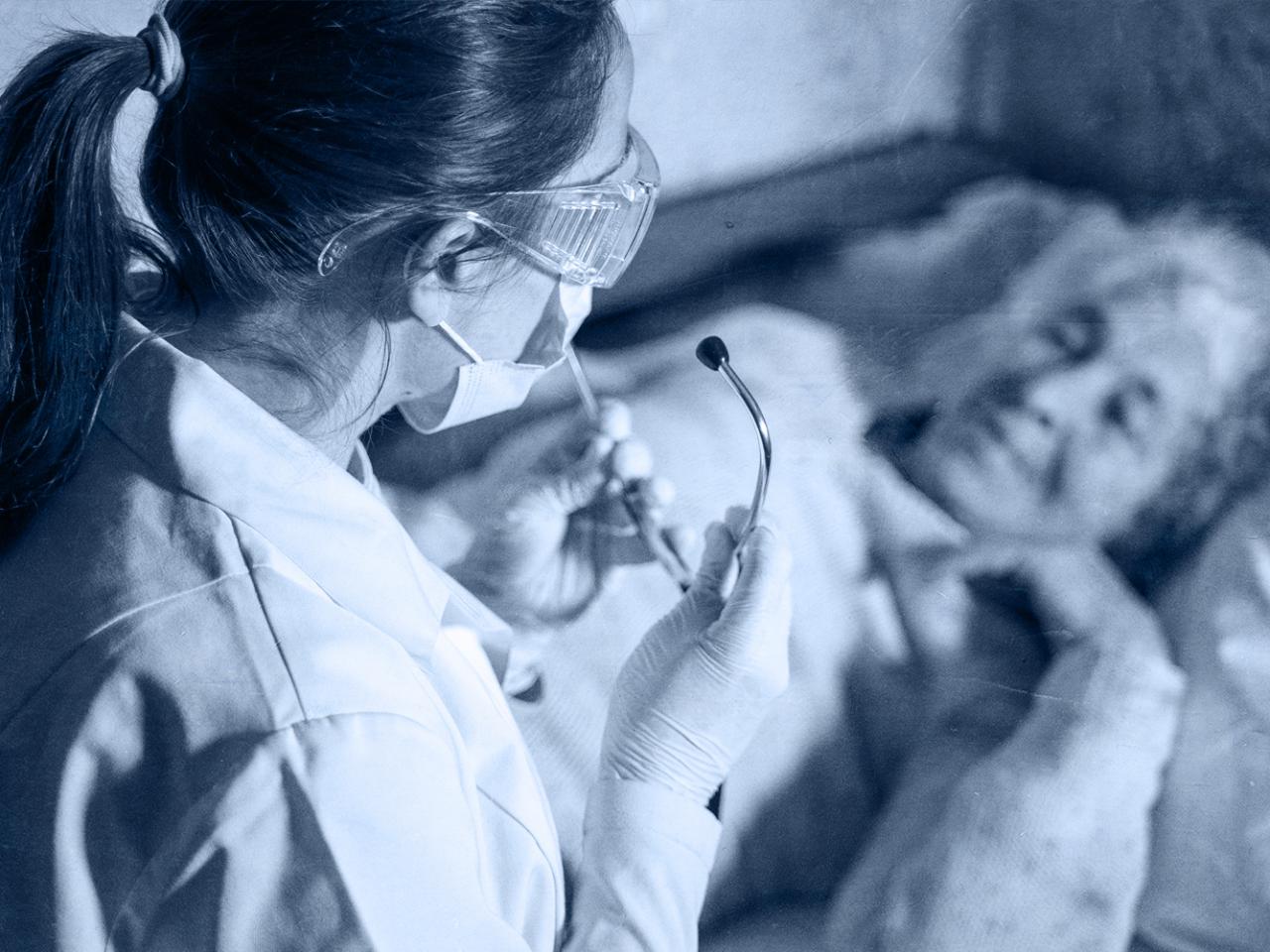COVID-19 is revealing our faults — and virtues.
The coronavirus (COVID-19) outbreak has exposed many cracks in our societal foundations. Across the globe, we simply weren’t prepared. That doesn’t mean we’re rotten. In fact, in combating the problem, some of our better natures have surged to the forefront.
By Ohio State Insights

And we can carry forward many of the good and bad lessons we’re learning from this moment.
That was the general message from a group of Ohio State experts recently during a virtual discussion of COVID-19’s impact hosted by the College of Public Health. The panel featured thought leaders offering insight into how the virus has affected everything from health care to public policy to our business models.
“Public health is the normally invisible foundation for healthy populations,” said Amy Fairchild, dean of Ohio State’s College of Public Health and the moderator for the event. “This has exposed the ways in which the foundation has collapsed. We need to see investment in public health infrastructure that’s not only about preparedness for pandemic events but that supports and protects us day in, day out.”
Fairchild’s final question to the group was an important one: What’s the greatest lesson we can take from COVID-19? Each panelist gave hopes and predictions for how we may change.
Michael Oglesbee, director of Ohio State’s Infectious Diseases Institute, said there are so many lessons to be learned.
“What I’m frustrated by is the importance of preventing something that is not immediately on your doorstep. This situation is not a surprise. There are numerous examples of this. The take home is (that we must) maintain vigilance in the absence of disease. Too often, the problem goes away. We forget about it. We need to increase focus on how these diseases emerge. We have to come up with a way to illustrate the importance of preparedness. The whole public needs to be exposed to this and appreciate that.”
Some areas of society already have preparation practices in place and could give us a model we can adopt in other aspects of society.
Dr. Andrew Thomas, chief clinical officer at the Ohio State Wexner Medical Center, explained during his presentation how the medical center regularly practices trauma drills for events such as terrorist attacks, tornadoes, plane crashes and pandemics. They also have “just in time” education plans to help health care professionals respond to unforeseen emergencies. Those protocols have helped the medical center mobilize for COVID-19 quickly. Still, Thomas’ biggest takeaway has been what he’s witnessed from the people on the front lines.
“The one thing I am continually reminded of is the heroism of the people I work with and the loyalty and commitment to their patients and to each other, and in many ways to the university. But you pinch yourself and realize these people do this every day. It’s been incredible, the heroism of people.”
We need to increase focus on how these diseases emerge. We have to come up with a way to illustrate the importance of preparedness.
--Michael Oglesbee, Director of Ohio State’s Infectious Diseases Institute
Philip Renaud, the director of Fisher College of Business’ Risk institute, echoed Thomas and said many of us can take these examples of heroism forward.
“We need to think about being more empathic as a society. We need to understand there are people on the front lines doing their job every single day who are exposing themselves to this. We need to make sure we’re caring for those people every single day.
“And we need to be prepared. We need to think about this not in terms of a one-off event. This is a series of potential problems we as a society are going to face. We need to think about how we’re going to plan, how we’re going to prepare ourselves as families and how we’re going to prepare our businesses.”
Marc Spindelman, professor in the Moritz College of Law, said it is an important time to look at the role of laws and government. How we expect our government to help us without violating our rights. But possibly more importantly, how we’re learning lessons from those stepping up in our communities.
“The lesson here is what our values are and how we take care of one another. There are, of course, acts of heroism, but what I’ve been struck by in talking with students, colleagues, friends, neighbors and even strangers is all the small ways people are attending to one another in a moment of difficulty. These become acts that are imbued with a new form of meaning we might have forgotten about or taken for granted.”
About The Ohio State University College of Public Health
The Ohio State University College of Public Health is a leader in educating students, creating new knowledge through research, and improving the livelihoods and well-being of people in Ohio and beyond. The College's divisions include biostatistics, environmental health sciences, epidemiology, health behavior and health promotion, and health services management and policy. It is ranked 22nd among all colleges and programs of public health in the nation, and first in Ohio, by U.S. News and World Report. Its specialty programs are also considered among the best in the country. The MHA program is ranked 5th and the health policy and management specialty is ranked 21st.